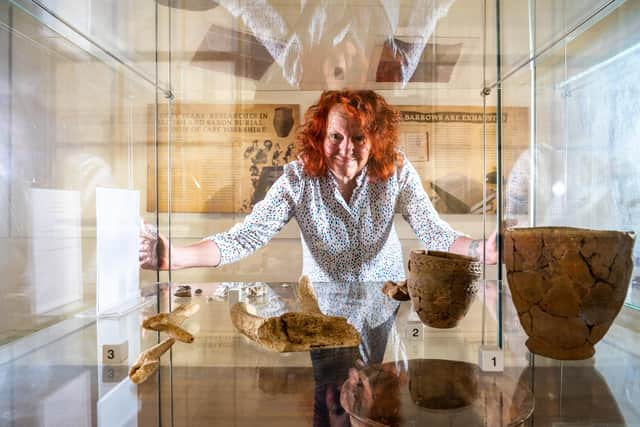John Robert Mortimer: The Yorkshire antiquarian, archaeologist, author and curator who was a man ahead of his time
And while he may have slipped into obscurity, he deserves to be remembered, say the people at Sewerby Hall and Gardens.
So they are staging an exhibition which looks at his life and historical significance.
Advertisement
Hide AdAdvertisement
Hide AdMortimer built the first purpose-built museum in the county, to display the finds from his excavations in the area, and opened it in Driffield.


The exhibition looks at his early life and childhood in Fimber, Fridaythorpe and Leavening. He soon became interested in local archaeology, and visited the Great Exhibition at the Crystal Palace in 1851 and also the British Museum, where he realised he was going to devote his life to antiquities and their study and interpretation.
Set against this background, the study of evolution was becoming a hot topic in Victorian Britain, with the publication of Darwin’s ‘The Origin of Species’ in 1859.
Mortimer married Matilda Mitchell in 1869 and moved to Driffield, where they rented St John’s Villa, which became home to his collection of archaeological and geological finds.
Advertisement
Hide AdAdvertisement
Hide AdHe subsequently opened the first purpose-built museum in the East Riding, in Lockwood Street in Driffield.
In 1863, Mortimer opened a round barrow on land owned by Yarburgh Lloyd Greame of Sewerby House. His work here led to a very detailed book published in 1905 : ‘Forty Years’ Researches in British and Saxon Burial Mounds of East Yorkshire’.
The book was the culmination of his life’s work and is still regarded today as the standard reference work for the study of pre-history in East Yorkshire.
After his death, Mortimer’s collection was acquired by Hull Museums, and is now part of Hull and East Riding Museums.
Advertisement
Hide AdAdvertisement
Hide AdCouncillor Nick Coultish, Cabinet member for culture, leisure and tourism, said it was a must-see show.
He said: “This is an absolutely fascinating exhibition, put together by curator Janice Smith, and is another great reason to visit Sewerby Hall and Gardens over the next few weeks.
"Visitors will certainly get to understand the importance of John Mortimer, and his relevance to this area, and see how he blazed a trail for the way that archaeological finds are still to this day cared for by East Riding Museums.”
The exhibition is to be found in Sewerby Hall, which is open at weekends. The gardens, zoo, and café are open daily. The house will also be open daily during the February half term holiday (12-16 February) and then daily from 23 March.
The exhibition runs until April 14. For full details of all opening times, and admission prices to the house and zoo, visit www.sewerbyhall.co.uk.
Comment Guidelines
National World encourages reader discussion on our stories. User feedback, insights and back-and-forth exchanges add a rich layer of context to reporting. Please review our Community Guidelines before commenting.
